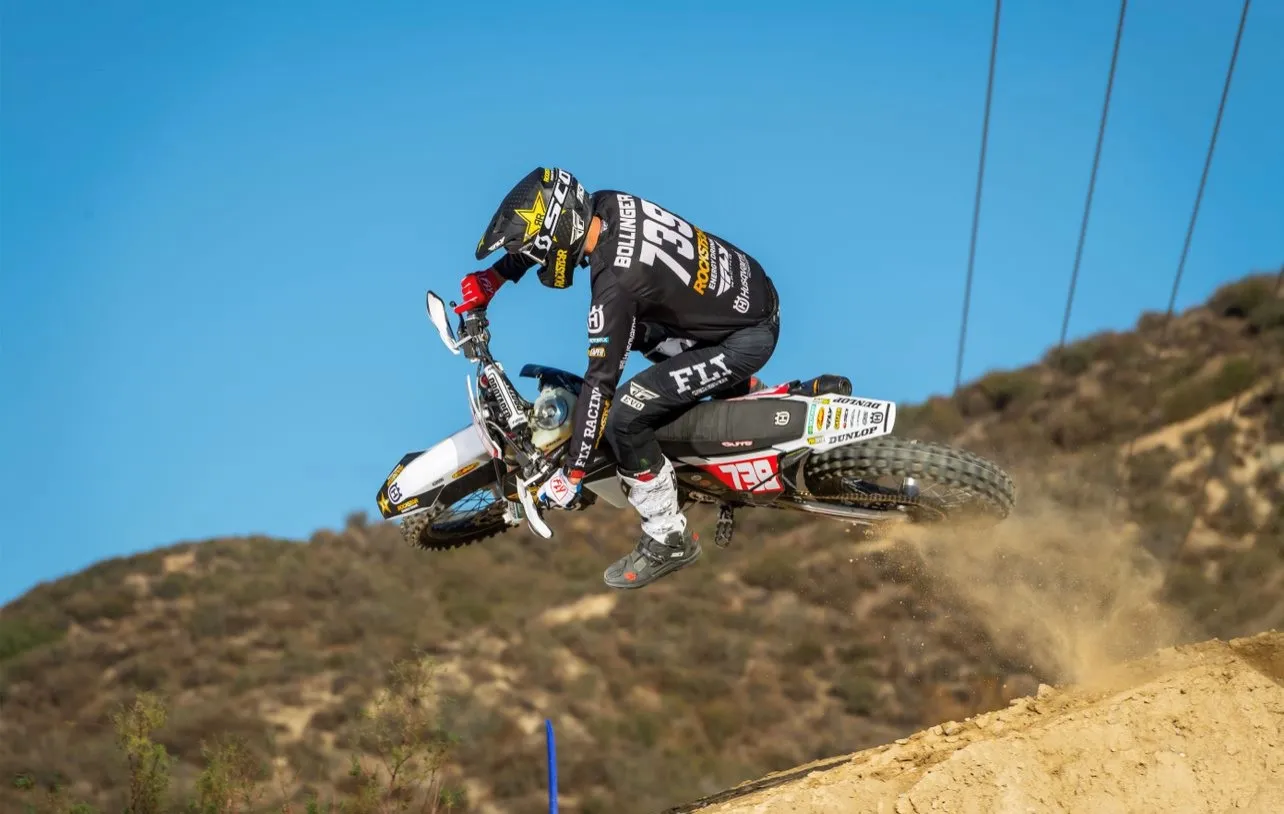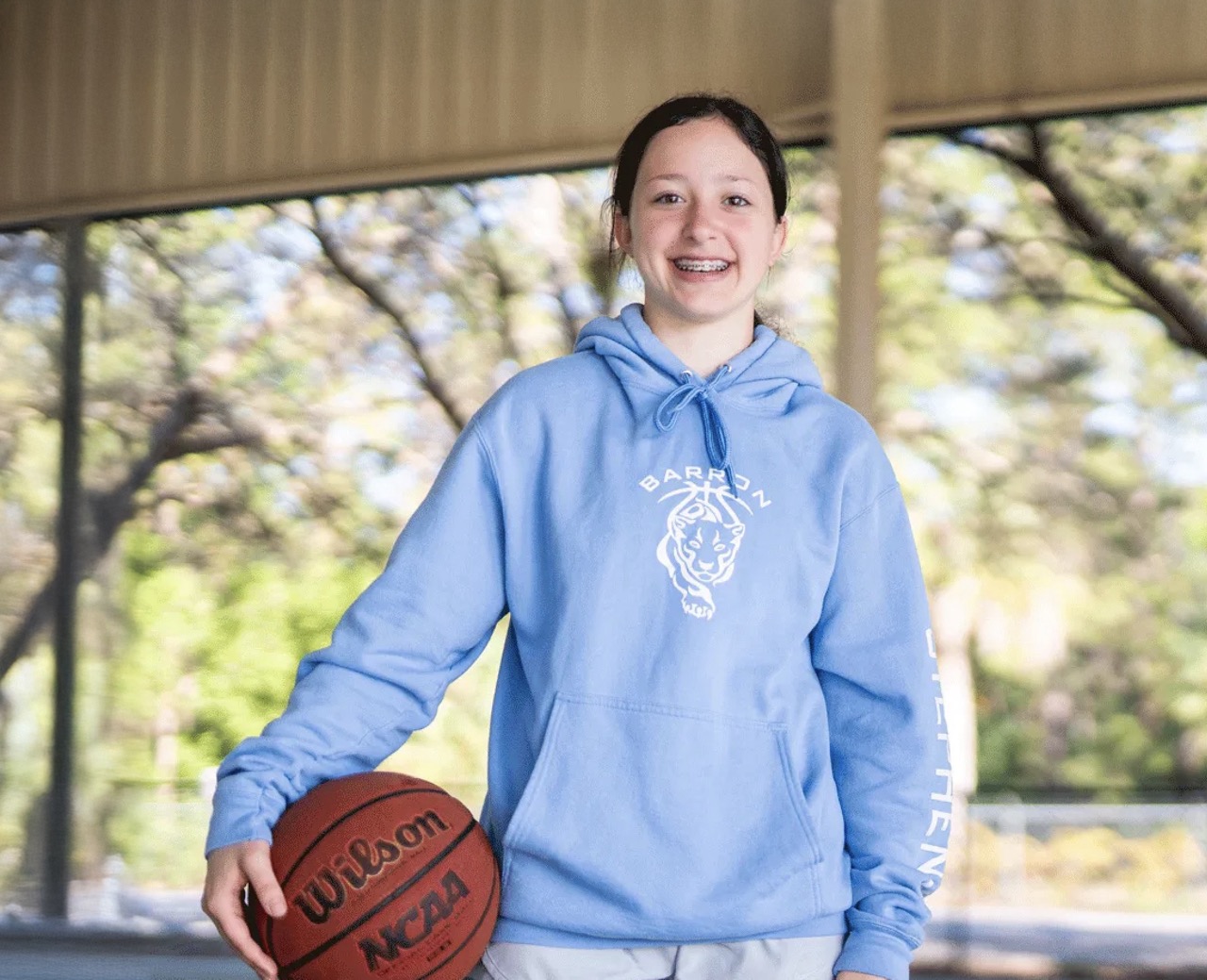Trevor's Story
Professional motocross racer Trevor Bollinger was told his racing days were over after an injury during a race, but the Arthrex ACL quad tendon BioACL™ reconstruction procedure got him back on his bike.

Motocross racer Trevor Bollinger is used to injury.
A rider since he was a toddler, Trevor had several knee surgeries before he turned pro at 18. Then in early 2020 during an endurance race, Trevor tried to keep himself from falling over by sticking his foot out to catch himself.
“I always stick my feet out to balance myself. I stuck my foot out, I heard a pop, and I thought I tore my meniscus,” he said. “I wanted to tough it out and finish the race.”
A Surgeon With a Plan
Multiple surgeons told Trevor that his knee was so damaged that his options were a two-stage surgery, a knee replacement, or a lengthy recovery.
Dr. Chad D. Lavender wanted to try something else.
“Trevor is a world-class athlete,” Dr. Lavender said. “He had torn his left ACL for the third time and had been told it might be time to give up his career.”
At just 25 years old, Trevor didn’t want his career to be over. “I only have so many years to do this,” he said. “Talking to Dr. Lavender and feeling like I had a solid plan to fix my knee, it gave me confidence.”
Dr. Lavender performed an Arthrex quad tendon BioACLTM reconstruction procedure. After removing part of Trevor’s quadriceps tendon (the tendon that connects the quadriceps muscle in the leg to the patella, or kneecap) to reconstruct his torn ligament, Dr. Lavender used Trevor’s own bone marrow to help with healing and recovery1 and incorporated the InternalBraceTM technique to support and provide additional protection during the healing phase.
Find a Doctor Near You
Recovery and Another Injury
While it was hard for Trevor to be off his feet for a few weeks, he is confident in his reconstructed knee. “My range of motion was back in six weeks,” he said. “At 10 months, I was feeling 100 percent. It was really hard not being able to touch a dirt bike for that period of time.”
Dr. Lavender was pleased with Trevor’s recovery. “Trevor did excellent,” said Dr. Lavender. “At 12 weeks, he was back to racing.”

Unfortunately, Trevor tore his other ACL, something that happens about 25 percent of the time while recovering from an ACL reconstruction. He went back to Dr. Lavender, who performed the same procedure on Trevor’s opposite knee.
Trevor was very optimistic about the recovery process.
“2021 was one of the hardest years for me. I had my reconstruction surgery on December 9, 2020, and I started riding again 2 months after that surgery and raced 3 weeks after that,” he said.
Trevor Returns to Motocross and Wins Medals
Trevor went on to win two medals during the 2021 Grand National Cross Country (GNCC) Series, and he kept Dr. Lavender up to date on his progress.

“To be able to have these procedures and get back to an elite level, to be top five in the world in what you do, it goes to show how these products are making a difference in patients’ lives,” Dr. Lavender said. “To see patients improving, doing well and getting back to sport, those are great things.”
After another accident in which he was pinned underneath the bike and sustained a tibial plateau fracture, Trevor underwent more surgeries—three in just eight days. There was a silver lining, though. Trevor’s ACL reconstruction remained undamaged.
“At first when I was hurt, I thought I had messed up my ACL again. I couldn’t believe it when they told me it was intact,” he said.
Reference
1. Lavender C, Singh V, Berdis G, Fravel W, Lamba C, Patel T. Anterior cruciate ligament (ACL) reconstruction augmented with bone marrow concentrate, demineralized bonematrix, autograft bone, and a suture tape (the fertilized ACL). Arthrosc Sports Med Rehabil. 2021;3(6):e1719-e1722. doi:10.1016/j.asmr.2021.07.030
This real patient was compensated for the time he took to share his personal experience with his minimally invasive ACL procedure.
The presenting surgeon is a paid consultant for Arthrex Inc. For questions, please contact Arthrex Medical Education.
The InternalBrace surgical technique is intended only to augment the primary repair/reconstruction by expanding the area of tissue approximation during the healing period and is not intended as a replacement for the native ligament.The InternalBrace technique is for use during soft tissue-to-bone fixation procedures and is not cleared for bone-to-bone fixation.







